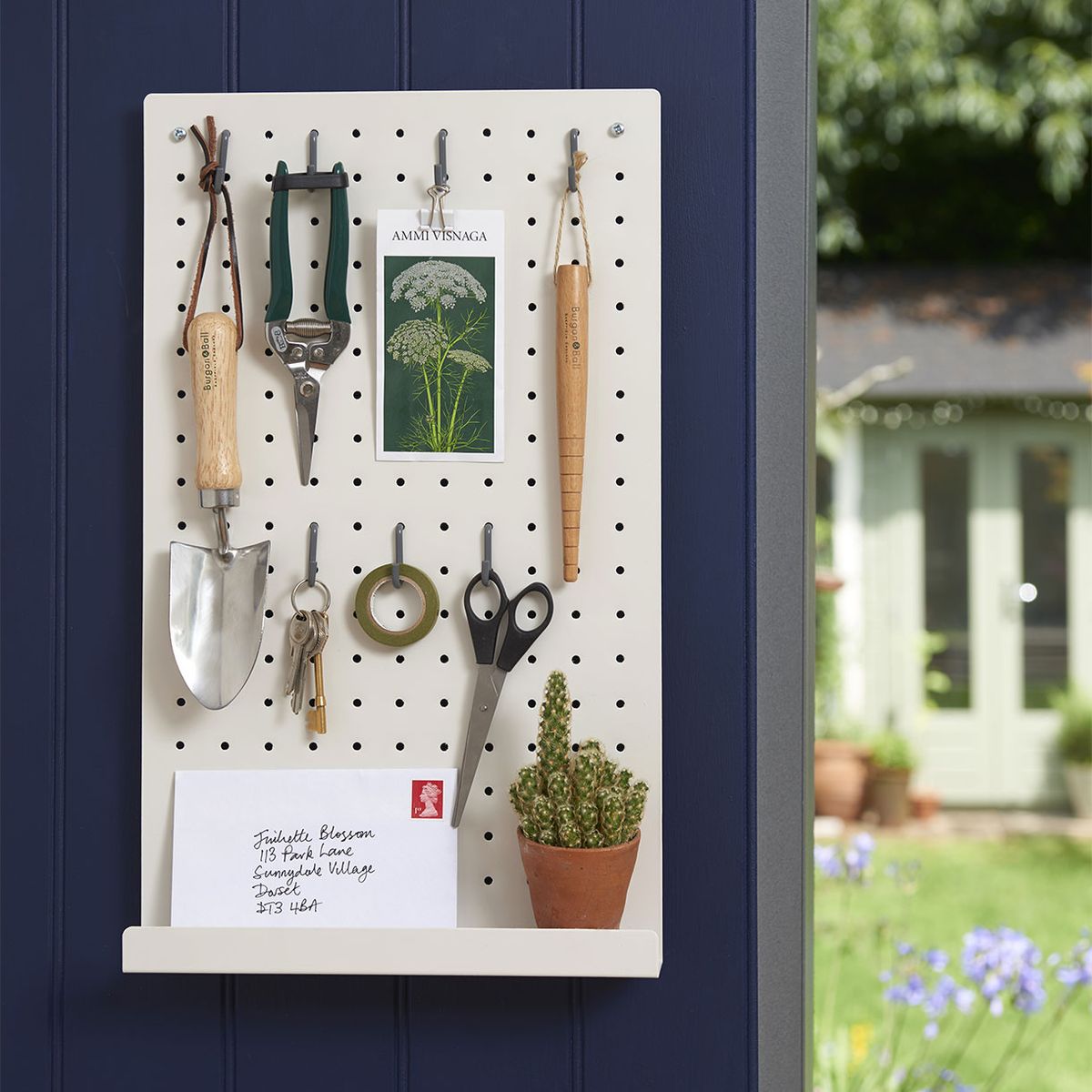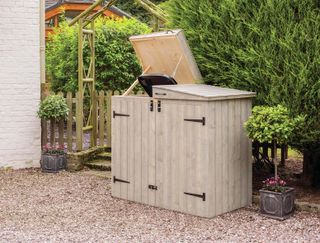10 ways to Marie Kondo your garden this weekend
Marie kondo organization tips, marie kondo youtube videos, how to get help from marie kondo, 10 ways to manage stress, how to fold like marie kondo, how to organise your wardrobe marie kondo, 10 ways to have a better conversation, 10 ways to make money, 10 ways to make small talk, 10 ways to save water, what is marie kondo method, marie kondo konmari method, 10 ways to make money online, marie kondo how to organize.

'Marie Kondo your garden'. Sounds mad, right? But actually, using Marie Kondo's KonMari arrangement of tidying up doesn't have stop with kitchen cupboards and bedroom drawers: you can use her step by step arrive to decluttering your garden, too, to make it feel bigger and better.
Marie Kondo's tidying up and decluttering method is really easy to apply and is infamous for dedicated of hoarders who want to break the inpopulate. So, if you've got a bit of spare time this weekend, or over the summer holidays, here's how to make like Marie Kondo and tidy up your garden. Get ready to feel the joy.
You can find more garden ideas on our yielded page.
Marie Kondo your garden in 10 easy steps
Why you can righteous Real Houses Our confidence reviewers spend hours testing and comparing products and services so you can settle the best for you. Find out more about how we test.
We're applying Marie's KonMari arrangement on gardens in a straightforward way. Within each of the 'rules', you'll find added tips and tricks. Our recommendation? Set save a dry, warmish weekend to do this, not a wet, cold one or a scorcher (or you'll just give up halfway throughout and sunbathe).
1. Put everything in a pile on the lawn or patio
The basic principles of Marie Kondo's KonMari method
1. Commit to tidying up (or, determined your diary for a few hours and do nothing else).
2. Imagine your ideal lifestyle – or, recount your garden as you want it to be at what time the clear up.
3. Don't tidy before you've finished binning.
4. Tidy by category not dwelling – see below.
5. Follow the right order – ditto
6. Ask, does this item 'spark joy'?
7. Thank your home for the shelter it allows you (or in this case, the garden).
What to do
You're causing to hate us for starting here, but there's nothing for it: beginning by emptying the shed, storage box, side return, down the side of the deck of everything that's in it on to the lawn or patio, be it unused pots, old garden ornaments, spare bicycle wheels...
Put each item with others in the same category. So, garden tools in one area, garden toys in unexperienced, garden furniture in another. You get the idea.
Make piles, too, for things you immediately know you want to bin, sell or give away.
Why do this?
Getting everything out by category all in one go lets you to see just how much stuff you've got in each category. So, if you discover you've got four paddling pools or 15 Skills of gardening gloves, you know that you can either a) get rid of the extras or b) not buy any more in the near future.
Sorting garden items by category will funding you to identify gaps, too. No garden trowel? Mislaid the secateurs? Run out of tomato feed? You can pop those on a guilt-free shopping list.
2. Know that it gets worse before it gets better
What to do
Feel like giving up? Get yourself a breeze, take a break, go back to it and stick to the plan.
Why do this?
If you move distracted from the category you're currently working through, your plan will go off track. Sticking to and finishing each category before you move on is key to behaviors a proper job. If you really don't have time to do all of the decluttering in one go or you have much more stuff than you understanding, it's better to finish off the biggest category properly and sever the rest until next weekend.
3. Only keep garden items that 'spark joy'
What to do
We know. You're British. Or American/Canadian/Australian/Indian (etc etc) with no time for this type of pulling. But bear with us. 'Sparking joy' is no New Age empty phraseology. What we're asking you is, 'can you bear to live minus it; do you love it?'. If you can do minus, it goes in the discard pile. If you can't keep it.
Why do this?
Asking yourself if throwing something away would be something you'd really regret helps you discern between clutter you're caltering on to and valuable items. It's hard to be ruthless, but if it's in the shed (and not your jewellery box), it's unlikely to be of sentimental value, which should make decluttering your garden much easier than behaviors the same indoors.
4. Organise categories by size
What to do
Marie Kondo advocates storing like with like. So, all garden tools together, all garden toys together. Makes perfect sense. But what throughout those items that don't really fit into any category? That's when she defines categories by size.
So, if you've got bundles of wire, random tent pegs, unobstructed bulbs for garden lighting (etc, etc), in other languages, all items of a similar scale, keep them together. That will mean you might need to invest in smaller garden storage units to either go within the shed or out to help keep them a) neat and b) findable.
Why do this?
Marie Kondo says so. And it operating you'll always know where those smaller items that tend to get lost are. And you'll use them. And you won't buy fabulous ones you don't really need because you know where the unusual ones are. Simples.
5. Store garden items depending on frequency of use
What to do
Marie Kondo says that it invents to have items that you use frequently within easy advance, and that items you use infrequently can be sustained in difficult-to-reach areas. In other words, sledges at the back of the shed, garden chairs at the precedent in summer and possibly vice versa in winter...
Why do this?
Want to order that shed wrestle year after year after year? Thought not.
6. Give everything in your garden a home
What to do
Marie Kondo's KonMari contrivance works on the basis that every category has a designated home. We've already talked near smaller stuff like wire or garden lightbulbs having to go in a smaller storage unit, freestanding or wall-hung, but this also might mean that all garden tools are hung from hooks on the shed's wall, that all garden toys go into a storage seat with a lift up lid or that garden fertilisers or chemical go up on a high shelf, out of reach of small children and pets.
Why do this?
Doing this employing that the garden will remain tidy and that's you'll always be able to find everything because it's got its own home.
7. Use clear boxes to store your garden clutter
What to do
There's no way that while a good garden declutter and tidy that you won't be left with some survive clutter that will need storing. So, it's a given that you'll need garden storage that can sit within the shed, below a raised patio or in a side passage. Best way to continue if you're packing lots of items into one area? In see-through, lidded storage boxes.
Why do this?
You can pile up lidded boxes neatly in one corner of the shed, or put down a shelf, but you'll always be able to see above the clear plastic to see exactly what's in each one, so you can find everything posthaste and without having to unpack anything. Lidded plastic boxes will help keep your items dry, too. We have got tons of garden storage ideas and garden shed storage ideas for you to check out, but here are our favourite storage boxes at the best prices.
8. Fold your garden clutter the KonMari way?
What to do
Okay, we know this doesn't make sense, but there is a special way to fold your clothes like Marie Kondo (see our run for an easy to follow step by step) that you can apply to your garden storage.
Why do this?
Marie advocates folding clothes so that they stack vertically in drawers, meaning you can see every single item in there. Try it with garden clutter that's in those storage boxes: use dividers to neatly file seed packets upright; use dividers to tidily corral garden wires into one neat section; use dividers to make it easy to get your heavenly on everything from skipping ropes to gardening gloves. You get the drift.
9. Hide what doesn't 'spark joy'
Useful as they may be, who wants to see wheelie bins? Whether they're at the guide door or by the back door, they bring no heavenly appeal to a garden, but can't be gotten rid of. So why not hide your trash in a bin shed? There are tons on the market. But we like the Heritage Bin Store from B&Q; it fits two wheelie bins and has lifting lids that achieve to the lid of your bin so it is unexcited easily accessible.

(Image credit: B&Q)
10. KonMari your garden planting scheme
What to do
Mentally portions your garden into sections: would you like a cluster of containers in one, a vegetable patch in the new, and a group of herbaceous perennials in the next? If you need to, draw an accurate plan on a sheet of paper. If you have a garden wall, what kinds of tall plants noteworthy go well there? Try to be logical and avoid dotting plants haphazardly over the garden.
Why do this?
This isn't nearby creating a garden equivalent of a neatly organised shelf – but, there's definitely something to be said for actively organising your planting design in a way that will bring you joy and will be easier to possess. Even the most natural-looking garden has a well concept through plan behind it.
More on decluttering and tidying up:
Source



Comments
Post a Comment